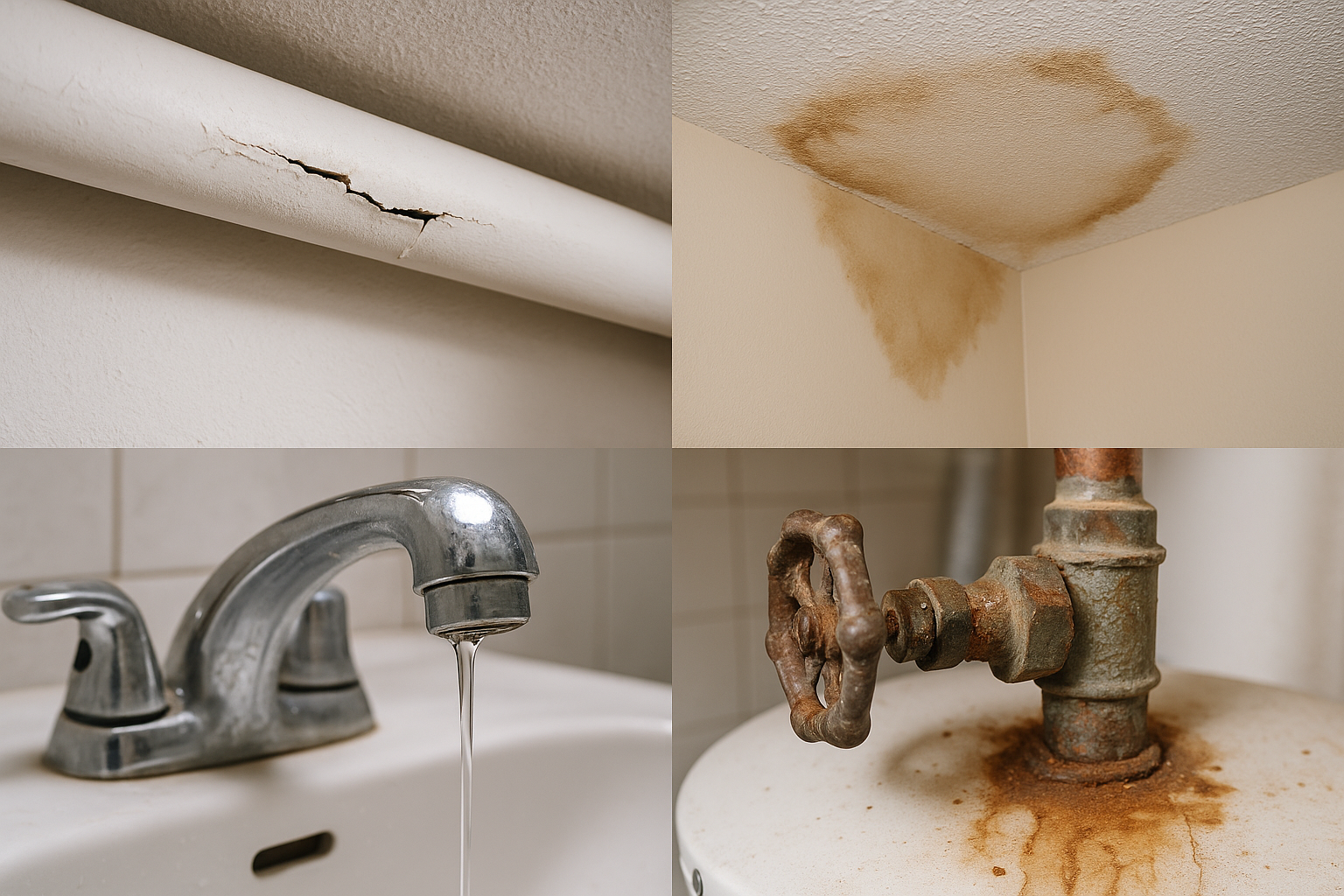Plumbing problems show up fast in Flagstaff. Pipes freeze and split. Water stains appear on ceilings and walls. Faucets lose pressure or start to drip. These issues aren’t rare; they’re part of life here. Inspections always turn up something, and the same problems keep coming back. The weather, the water, and the age of the houses all push plumbing to the edge.

Flagstaff’s water isn’t gentle. Minerals build up inside pipes and fixtures. Faucets clog. Water heaters fill with sediment. Valves stick. Over time, these minerals eat away at metal, leaving behind rust and corrosion. Pipes that once ran clear now run slow. Showers turn from steady streams to weak dribbles. Homeowners notice, but often too late. By the time the signs show, the damage is already done.
Winter brings its own set of problems. Temperatures drop fast. Pipes in crawl spaces and exterior walls freeze solid. When the thaw comes, water pours out of cracks and joints. Basements flood. Floors buckle. Insulation soaks up water and holds it against wood framing. Mold follows. The cycle repeats every year, and each freeze leaves the system weaker than before.
Hidden Signs That Point to Bigger Problems
Most plumbing issues don’t announce themselves with a burst pipe. They start small. A faint musty smell in the bathroom. A patch of peeling paint near the kitchen sink. Water pressure that drops for no clear reason. These are the early warnings. Ignore them, and the problems grow.
- Discolored pipes: corrosion eats away at metal from the inside out.
- Stained ceilings: water leaks above, soaking drywall and insulation.
- Inconsistent water pressure: blockages or leaks somewhere in the system.
- Banging or whistling sounds: air trapped in pipes or loose fittings.
- Slow drains: clogs deep in the line, often from grease or roots.
- Musty odors: hidden leaks feeding mold behind walls.
- Water spots: evidence of leaks that come and go with the seasons.
During water damage inspections, these symptoms always lead to something bigger. Water finds its way into the smallest cracks. It rots wood, rusts metal, and creates the perfect environment for mold. By the time stains appear, the real damage is already hidden out of sight.
Water Heaters Take a Beating
Flagstaff’s water heaters never get a break. Cold water comes in, minerals settle at the bottom, and the tank works overtime to keep up. Sediment builds up fast. Heating elements get buried. Tanks corrode from the inside. Pressure relief valves stick or fail. Homeowners notice lukewarm showers, strange noises, or rusty water. These are all signs the water heater is struggling.
During water heater inspections, sediment is the first thing we check. A thick layer at the bottom means the tank is losing efficiency. Heating costs climb. The tank strains to keep up. Corrosion eats through the metal, and leaks start small before turning into floods. Regular flushing helps, but most tanks go years without maintenance. By then, replacement is the only option.
Drainage Systems Under Pressure
Flagstaff’s soil doesn’t do plumbing any favors. Clay expands and contracts with every freeze and thaw. Pipes shift. Joints pull apart. Sewer lines crack. Tree roots push through tiny gaps, searching for water. Once inside, roots grow fast, filling pipes and blocking flow. Toilets back up. Drains gurgle. Sewage seeps into yards and basements.
Modern camera inspections catch these problems early. A quick look inside the line shows every crack, root, and blockage. Homeowners see the problem for themselves, not relying on speculation. Sewer line inspections reveal the weak spots before they turn into emergencies. Repairs cost less when caught early. Wait too long, and the only fix is a full replacement.
- Clay soil shifts: pipes move and break.
- Roots invade: blockages form deep underground.
- Old pipes: cast iron and clay crumble over time.
- Disconnected joints: ground movement pulls pipes apart.
Every inspection uncovers at least one of these issues. Homeowners who stay ahead of them avoid the worst headaches. Those who wait end up with flooded basements and expensive repairs.
Why Regular Maintenance Matters
Plumbing doesn’t fix itself. Small leaks turn into big ones. Slow drains become full blockages. Water heaters fail without warning. Regular maintenance inspections catch these problems before they get out of hand. Our inspectors spot the early signs: corrosion, leaks, slow drains, and pressure drops. Homeowners get a clear understanding of what needs attention now and what can wait.
Ignoring maintenance is a gamble. The cost of a simple repair is nothing compared to the price of water damage restoration or a full sewer line replacement. At Aspen Home Inspections, we know that inspections pay for themselves by catching problems early and keeping systems running longer.
Schedule Your Plumbing Inspection Today
Don't wait for a plumbing emergency to strike. Contact Aspen Home Inspections at 928-600-7761 or schedule an inspection online to protect your Flagstaff home.


